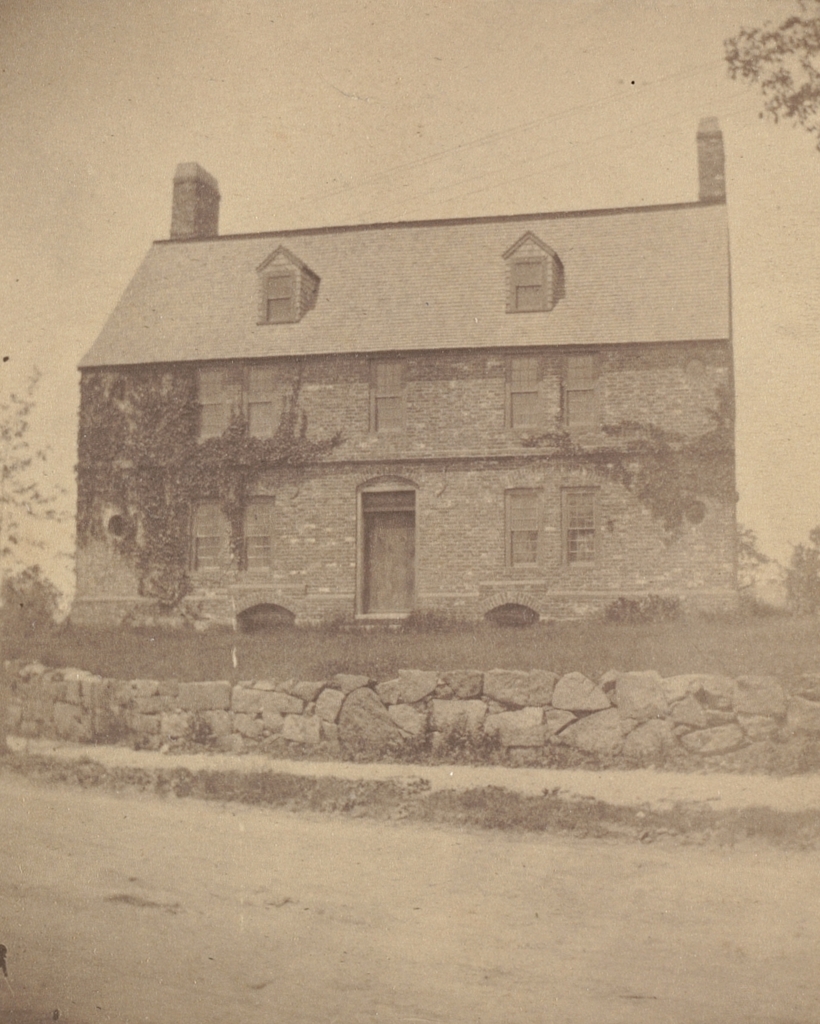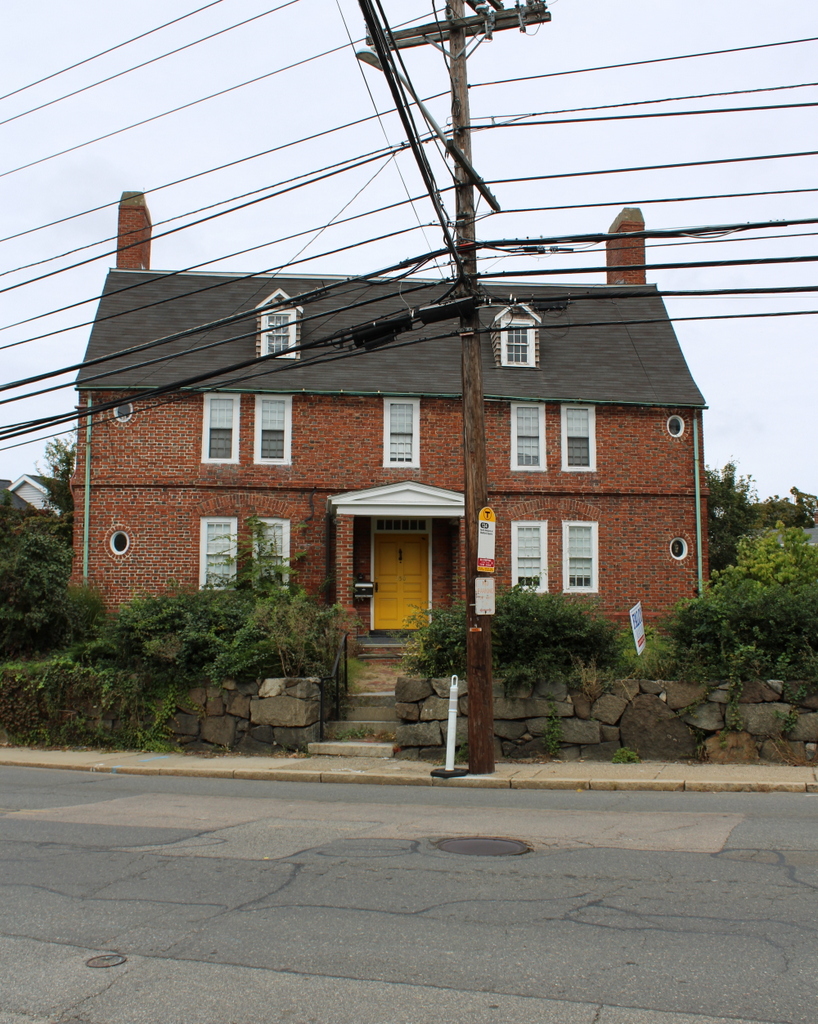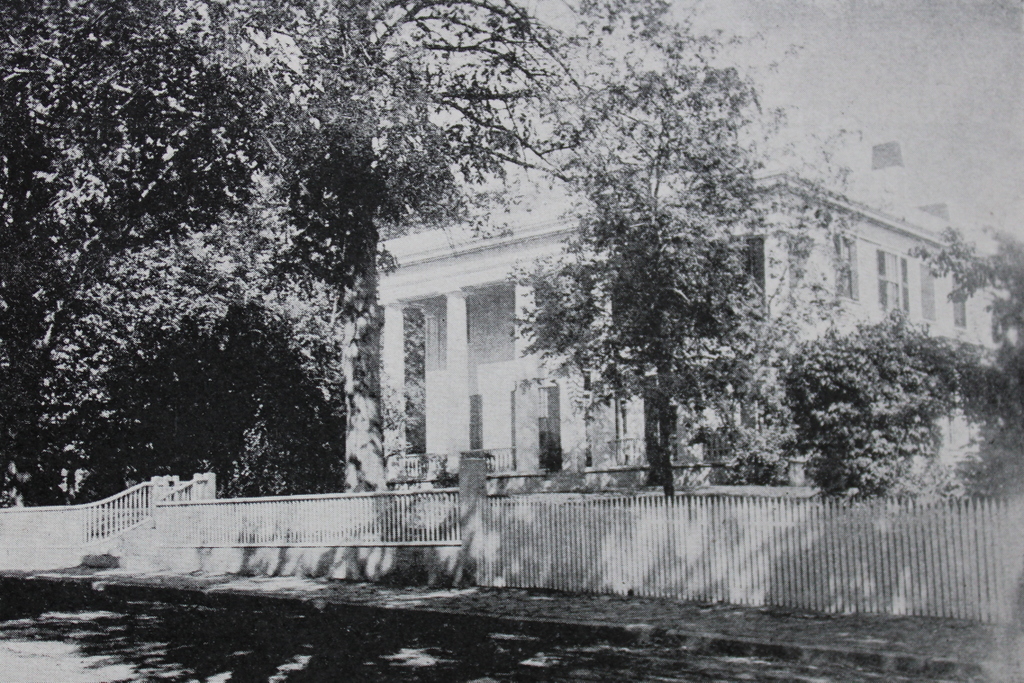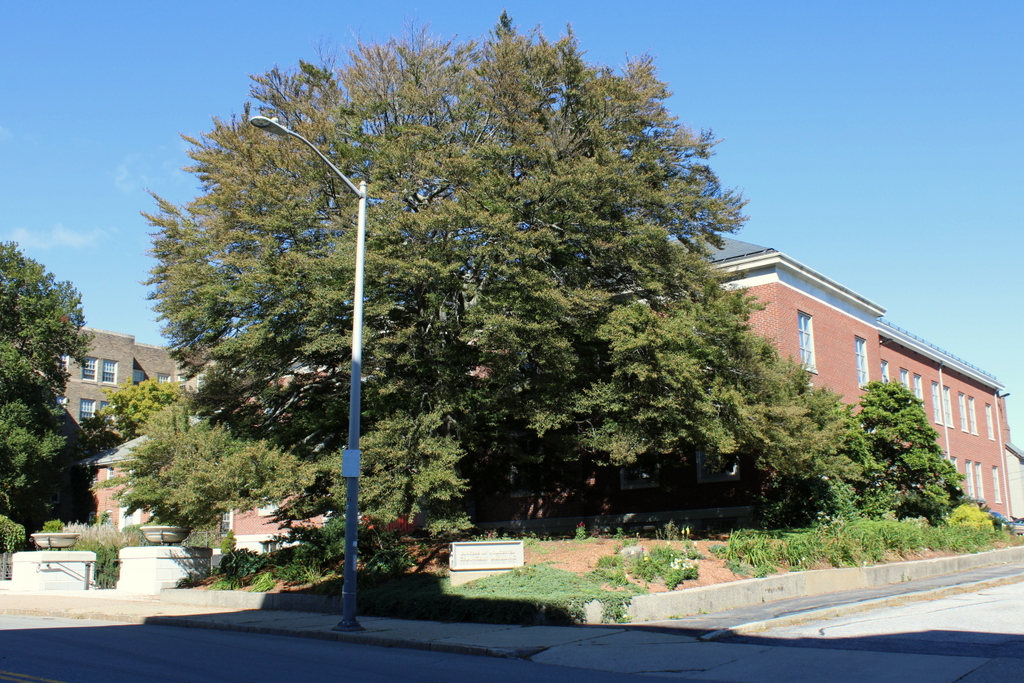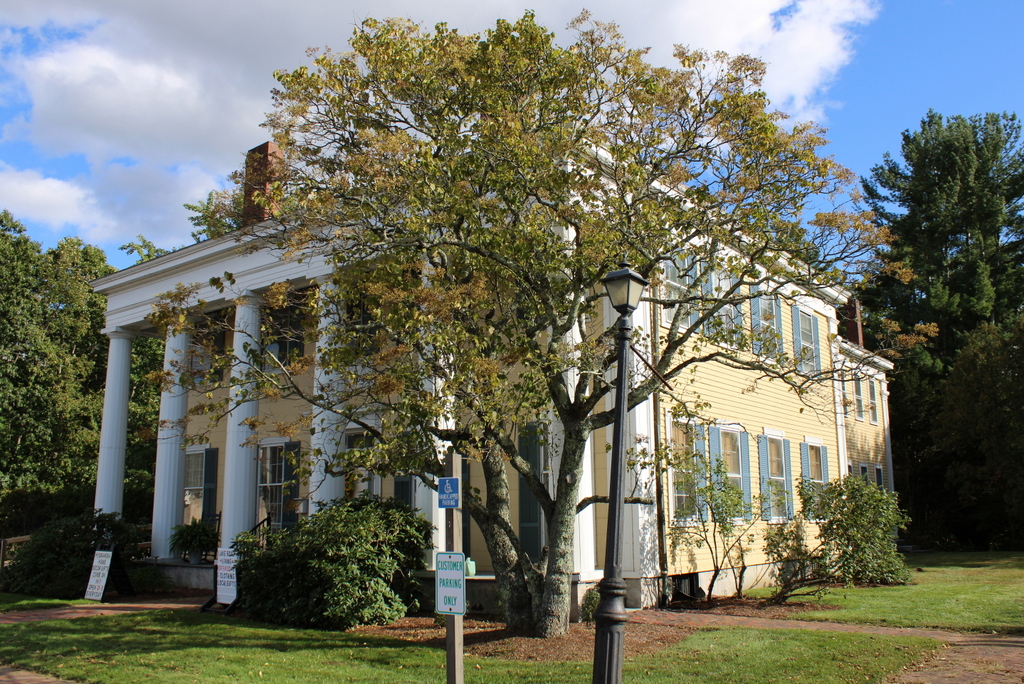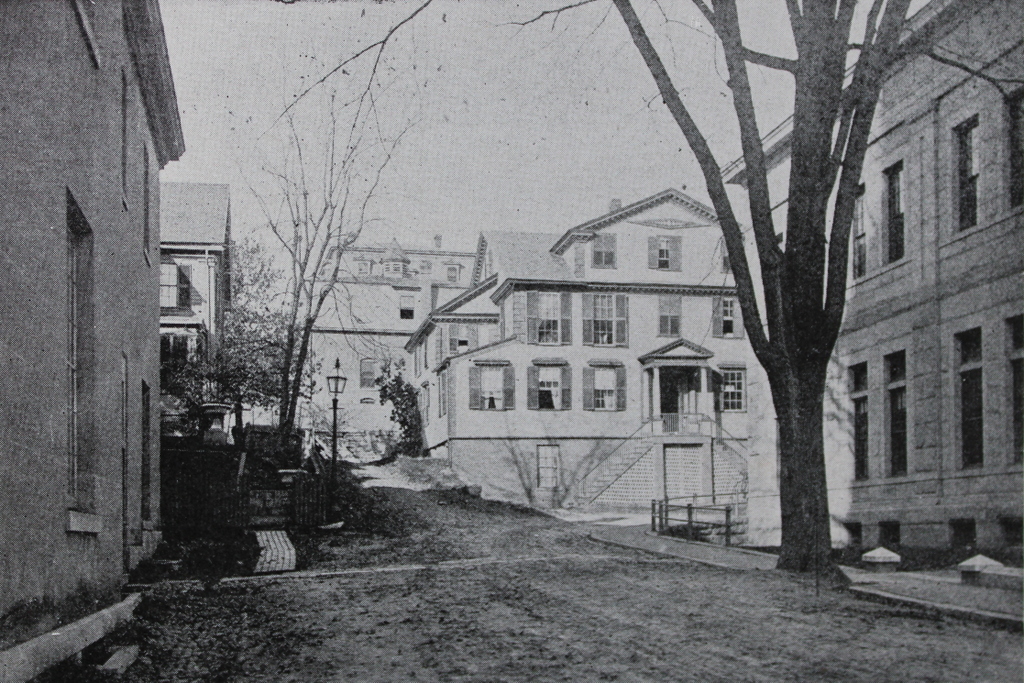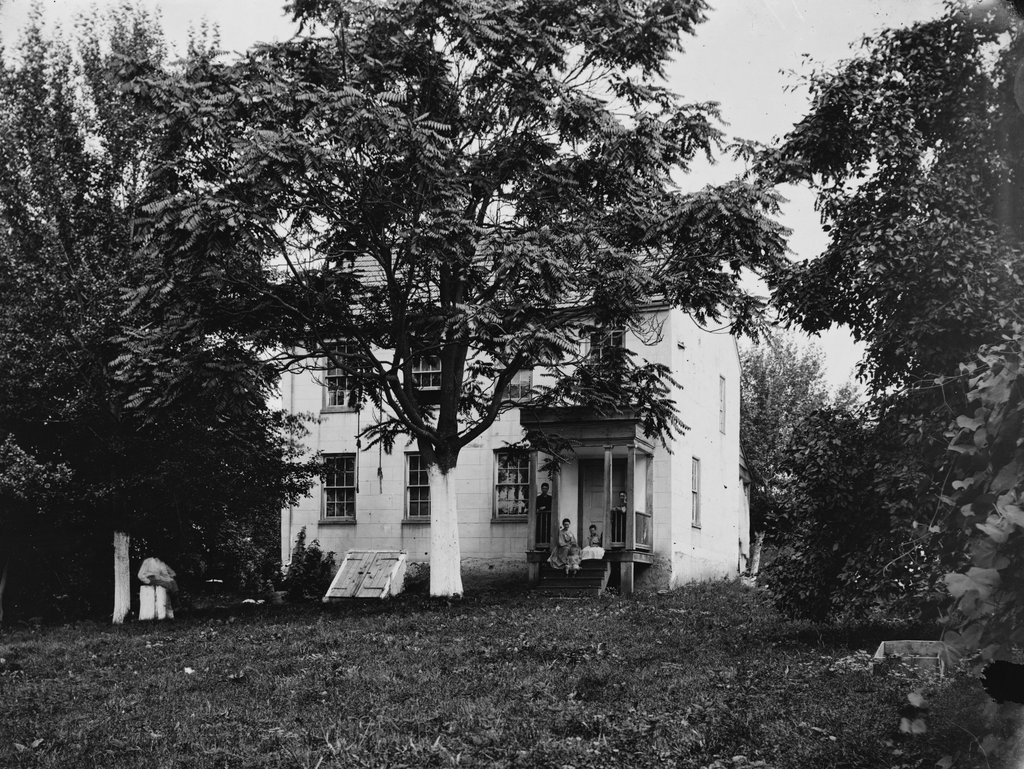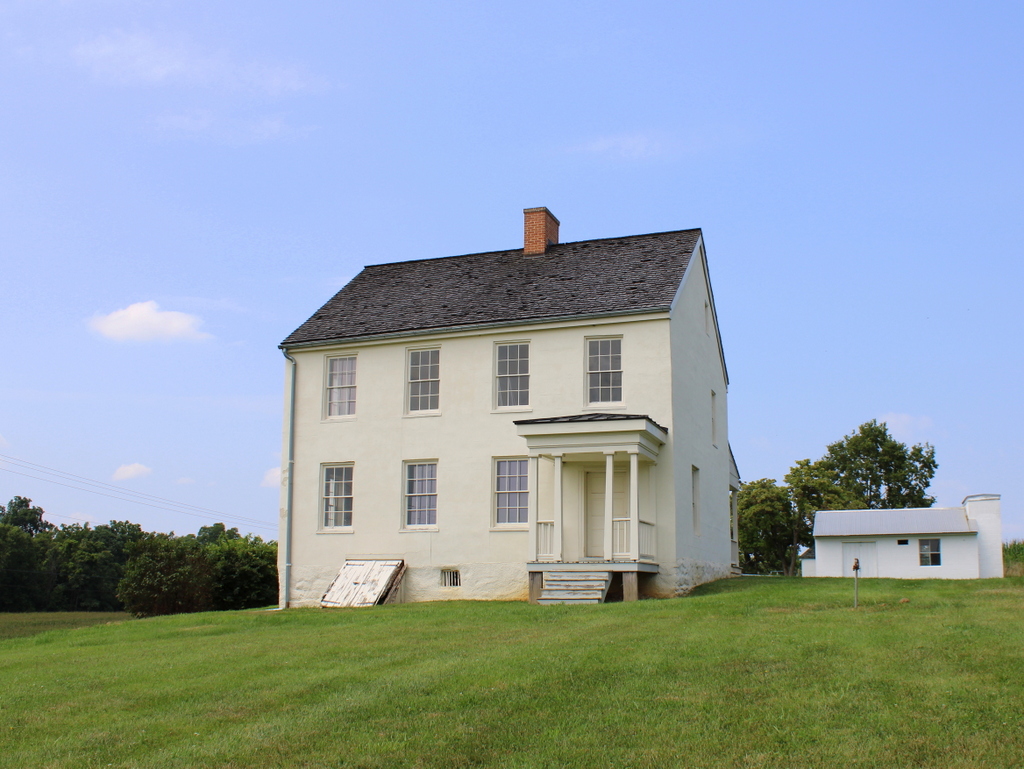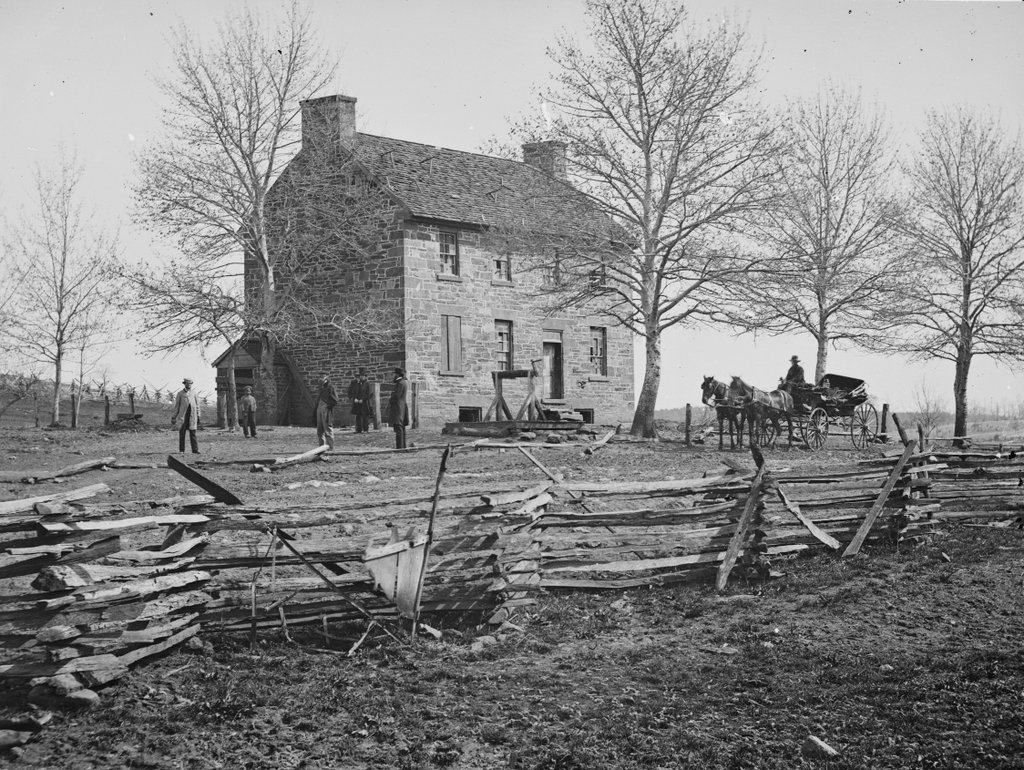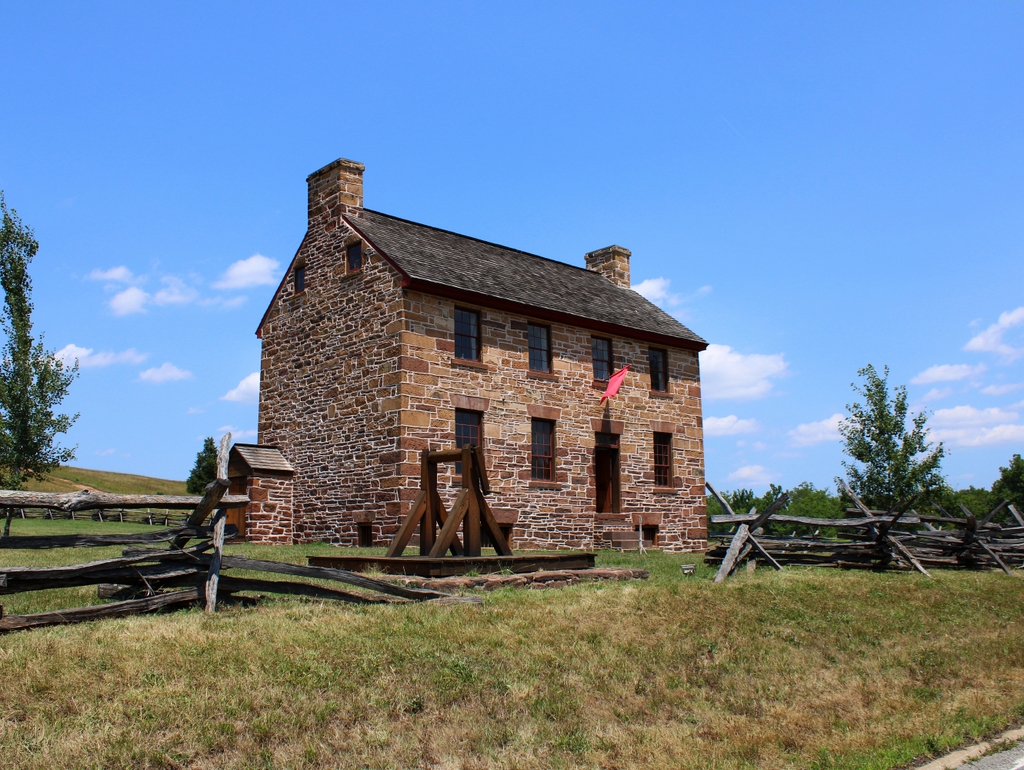The birthplace of General Joseph Hooker on West Street in Hadley, Massachusetts, around the 1890s. Image from History of Hadley (1905).
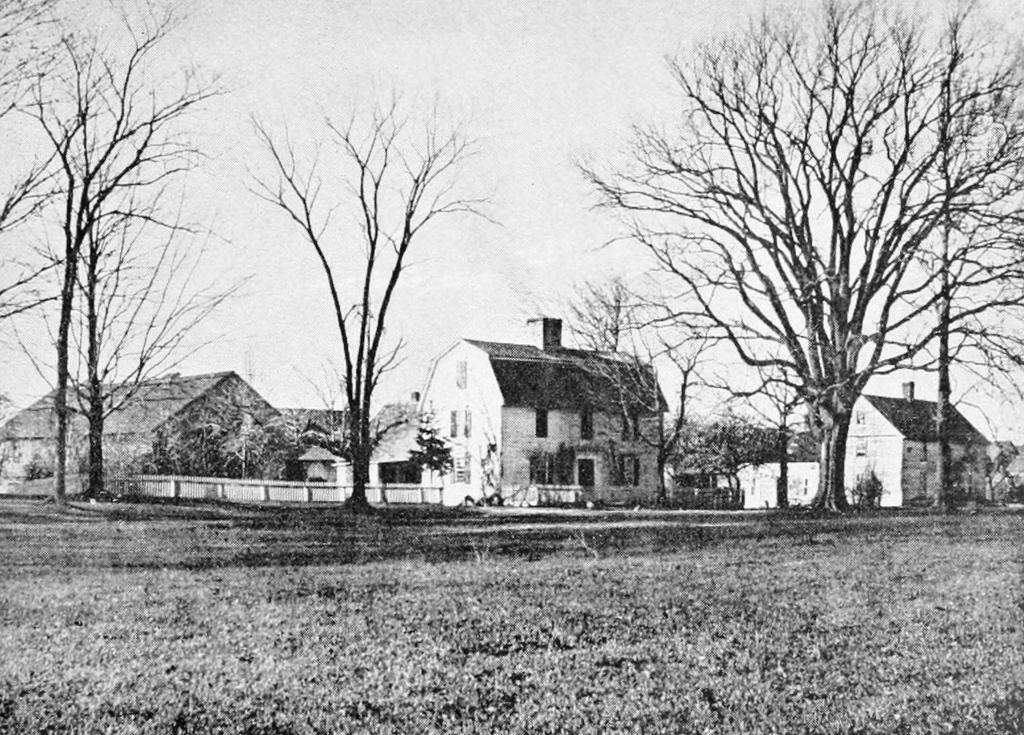
The scene in 2021:
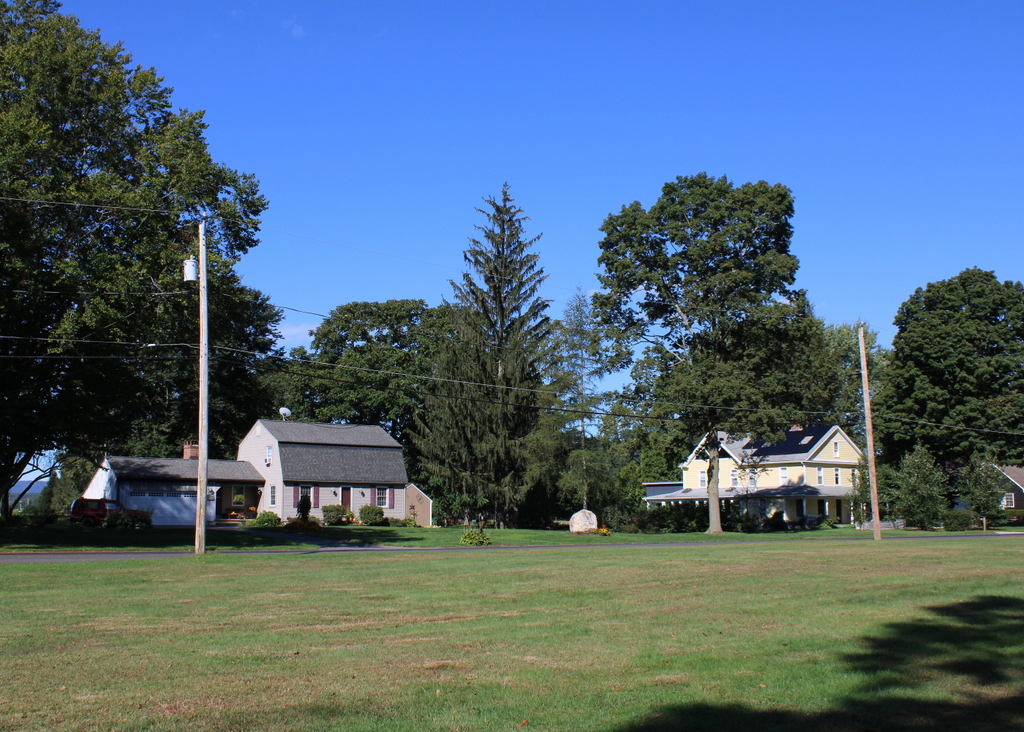
The house in the center of the first photo was likely built at some point during the 1700s, and it stood on the west side of West Street, just north of Cemetery Road. It is best remembered for having been the birthplace of General Joseph Hooker, who was born here on November 13, 1814. Hooker’s father, who was also named Joseph, purchased the house from the Porter family in 1805, shortly before his marriage to Mary Seymour. They had four children who were born here, including Joseph and his three older sisters: Nancy, Mary, and Sarah.
The family would only live here in this house for a few more years, before selling it in 1817 and moving to a house nearby on Middle Street, where Joseph Hooker spent much of his childhood. He attended Hopkins Academy here in Hadley, and he lived with his family in several other houses on West Street before entering West Point in 1833. He graduated in 1837, and that same year his parents left Hadley and relocated to Watertown, New York.
Upon graduating from West Point, Hooker was commissioned as a second lieutenant in the army. He served throughout the Mexican-American War, and after the war he was stationed in California. In 1853, he resigned from the army and took up farming in Sonoma County in California, and from 1859 to 1861 he served as a colonel in the California state militia.
Like many of his fellow West Point peers who had entered civilian life in the 1850s, Hooker returned to the army following the outbreak of the Civil War in 1861. He was appointed as brigadier general, and he served in the Peninsula Campaign, where he earned his nickname, “Fighting Joe Hooker.” The nickname originated because of an error in a newspaper dispatch that was intended to have read “Fighting – Joe Hooker Attacks Rebels.” However, perhaps because of his reputation for aggressive fighting on the battlefield, the name stuck with him.
Hooker would subsequently serve in the Second Battle of Bull Run, and at Antietam, where he was wounded early in the fighting. Then, in January 1863, President Lincoln appointed Hooker as commander of the Army of the Potomac, replacing General Ambrose Burnside. After the failures of both Burnside and his predecessor, George B. McClellan, Lincoln hoped that a more aggressive commander like Hooker would have greater success against Robert E. Lee. As it turned out, though, Hooker’s one major battle as commander was Chancellorsville, where he suffered a severe concussion and was ultimately defeated in one of Lee’s most decisive victories of the war.
Despite the loss, Hooker retained command of the Army of the Potomac, but he ultimately resigned in late June 1863, after a falling out between him and Lincoln. However, he remained in the army, and served with distinction in the western theater, including at the Battle of Lookout Mountain and during the Atlanta Campaign. Again, though, he had disagreements with his superiors, including General William T. Sherman, and in 1864 he was transferred to Cincinnati, where he commanded the Northern Department. He held this position until the end of the war, and he would continue to serve in the army until 1868, when he retired with the rank of major general.
Aside from his actions on the battlefield, Hooker would become the subject of an oft-repeated myth that his name was the origin of the term “hooker” for a prostitute. As the story goes, Hooker was a hard-drinking, hard-partying womanizer during the war, to the point where his prostitutes were referred to as “Hooker’s Brigade,” which became the origin of the term. In reality, while Hooker was a bachelor for most of his life including during the war, it seems unclear as to exactly what kinds of drunken debaucheries, if any, he was involved in. And, in any case, the word was being used in reference to prostitutes for at least a few decades prior to the war, although it is certainly plausible that his reputation—whether deserved or not—may have helped popularize the already-existing term.
In the meantime, Hooker’s birthplace here in Hadley changed hands several times over the course of the 19th century. His father had sold the house to John Hopkins in 1817, and it was later owned by Hiram Thayer. He died in 1854, and the house was subsequently owned by two of his sons, Ezra Thayer (1827-1895) and Chesmin Miller Thayer (1829-1882). The brothers evidently lived here together, and the 1860 census showing Ezra here with his wife Rebecca (1831-1916) and their 2-year-old son Charles (1858-1932), along with Chesmin and his wife Julia (1831-1912).
Hooker’s 1863 appointment as commander of the Army of the Potomac drew attention to the house. A February 8, 1863 article in the New York Times, which had originally appeared in the Northampton Free Press, described the house as “an old-fashioned, two-story house, with the gambrel-roof so peculiar to olden times, and altogither [sic] is a fit place for the early home of genius, whether it be an embryo Poet, President, or Major-General.”
The Thayer family would continue to live here for many years. Charles seems to have been the only child of Ezra and Rebecca, and Chesmin and Julia evidently did not have any children of their own, so the size of the family remained the same in the 1870 and 1880 censuses. Hooker apparently visited his birthplace at least once after the war, but otherwise he does not seem to have had much of a connection with his old hometown in his later years. He died on Long Island in 1879, at the age of 64, and he was buried alongside his wife in Cincinnati.
Here in Hadley, Hooker’s birthplace would find itself in the spotlight in 1895, when it became the focal point for a large reunion of soldiers from the III Corps in honor of their general. The festivities were held on May 7, 1895, starting early in the morning with a parade in Northampton. The veterans, guests, and spectators then boarded a train for Hadley, and about 3,500 people gathered here on the town common, in a tent in front of Hooker’s birthplace.
Among the many distinguished speakers at the event was General Daniel Sickles, who presented the town with a portrait of Hooker. He had served with Hooker in the III Corps and two men had been friends, but Sickles was a controversial figure whose debaucheries exceeded even Hooker’s supposed reputation. Prior to the war, Sickles had become the first person in the country to successfully use the temporary insanity defense for murder, after he killed his wife’s lover, Philip Barton Key II, the son of the Star Spangled Banner author. During the war, probably his most controversial action came at the Battle of Gettysburg, when he defied orders and moved his unit into a highly exposed position, losing his right leg in the process. Despite this, his wartime service was enough to earn him the post of U.S. Minister to Spain, which he held from 1869 to 1874. There, in addition to his diplomatic work, he also had an affair with the recently-deposed Queen Isabella II, and he then married one of her attendants, Carmina Creagh.
By the time he arrived here in Hadley for the ceremony in 1895, he was 75 years old and had been estranged from his second wife for many years. Citing his poor health, his speech was moved to an earlier spot in the program of events so that he could leave early. Notwithstanding these health issues, he spoke at length about Hooker, highlighting his military accomplishments while also defending him against accusations of drunkenness. In his address he also explained how meaningful it was to visit Hooker’s birthplace, comparing it to a visit to Napoleon’s tomb. He went on to explain:
I have never been assigned to a more pleasant duty than the one which calls me here to-day. The birthplace of the most brilliant soldier given to the late war by Massachusetts has an interest for all her citizens. To the survivors of the 3d army corps this spot has peculiar attractions. Our loyalty to the memory of Hooker is a sentiment in which affection and admiration are blended. His comrades loved him because he gave them confidence in themselves; because he hade them soldiers. They loved him because he was proud of them, and jealous of their honor and fame. We admired him as the intrepid brigade and division commander whose plume was always in the front of the battle. We admired his fearless bearing, his picturesque figure in the saddle, at the head of a column or in line of battle—the type of the soldier who shared every peril to which his command was exposed. We admired his thorough knowledge of his profession—from the duty of a soldier to the responsibility of a commander.
Aside from Sickles’s address, other speakers included state auditor and Civil war veteran John W. Kimball, Medal of Honor recipient General Henry E. Tremaine, and Worcester poet John Howard Jewett, who recited a poem for the event. Lunch came after the speeches, followed by other festivities here in Hadley, such as a concert, a cadet drill exercise, and a baseball game. Aging veterans relaxed in the shade and shared stories about General Hooker, and many people in the crowd visited his birthplace, which was decorated for the occasion.
At the time of the event, the house was still owned by the Thayer family, but neither of the brothers lived long enough to see it. Chesmin died in 1882 and Ezra in January 1895, only a few months before the Hooker celebration here. Their widows would continue to live here for a few more years, but the house was ultimately destroyed by a fire on April 6, 1898. The fire started around 3:00 p.m. in a barn on a neighboring property, and it soon spread to the Hooker birthplace. High winds, combined with a lack of sufficient firefighting equipment in Hadley, helped contribute to the spread of the fire, and several other barns and outbuildings were also destroyed.
Although the Hooker birthplace is gone, its location is commemorated by a large boulder that is visible in the center of the second photo. It was installed here in 1908, and it has an inscription that reads “Birth-place of / Maj. Gen. Joseph Hooker / Born Nov. 13, 1814 / Erected by the D.A.R. / 1908.” Just to the left of the boulder is a much more modern house that now stands on the lot. Although built in the late 20th century, it has an exterior that—whether intentional or not—echoes the appearance of its predecessor here.

